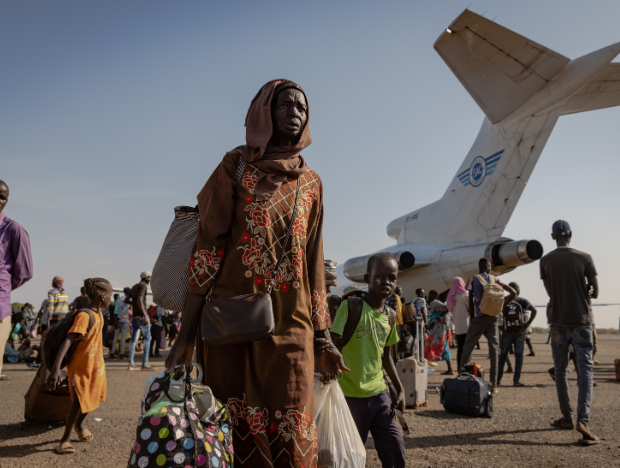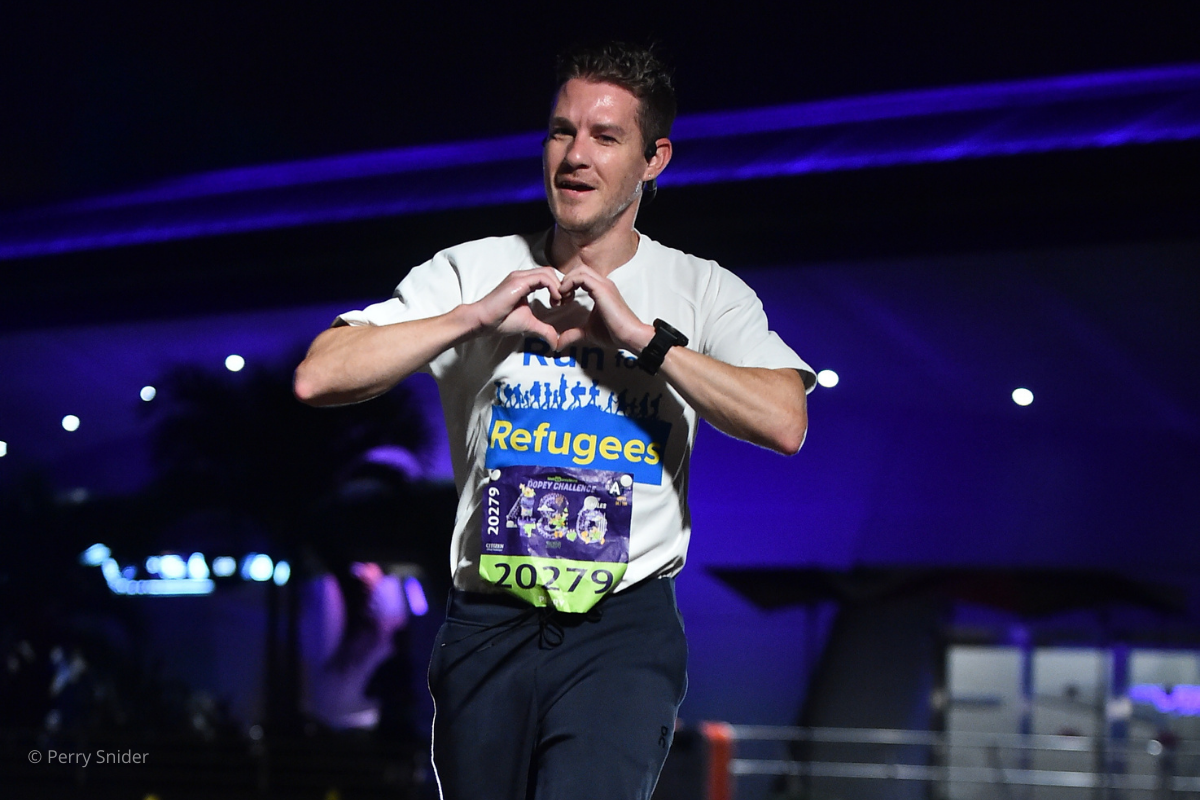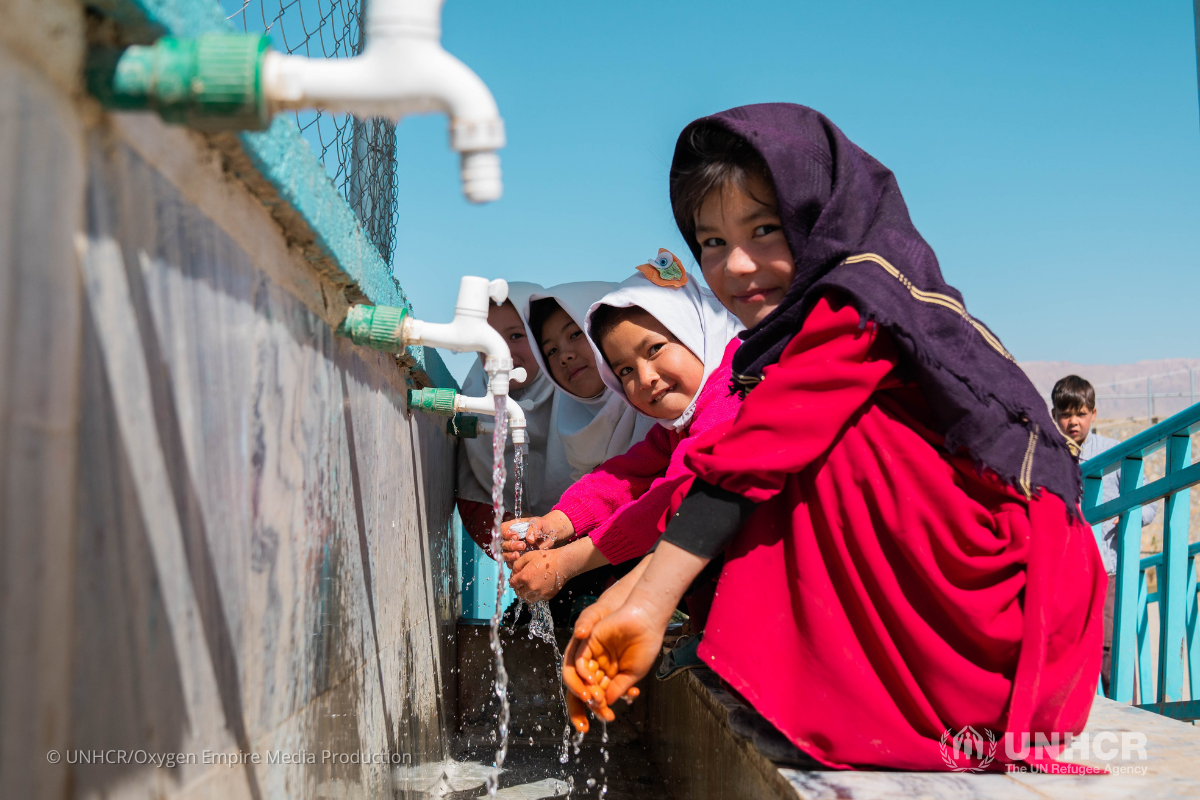Ethiopian families struggle to survive amid record drought
UNHCR is supporting local authorities in the Somali Region of Ethiopia to provide urgent aid to thousands forced to leave in search of water during worst drought for 40 years.
Ardo emerges from her shelter when she hears a truck delivering water, after several days of her and her livestock going without. Around five hundred internally displaced families are living at the makeshift Mara-gaajo site in Kebribeyah, Ethiopia’s Somali Region, after fleeing their homes in search of water during the worst drought in decades.
“We have never seen drought like this, it has affected everyone. We have named it ‘the unseen’,” said Ardo.
Ardo walked about 260 kilometers from her village, Kabtinag in the Korehe zone, deep in the Eastern Somali region of Ethiopia, to reach Kebribeyah, a small township some 53 kilometers from the region’s capital, Jijiga. The mother-of-four says she traveled with a group of people from her village.
“I can’t count the number of people that were displaced with us,” she said. “Nearly everyone in the village had left.”
Ardo, like most of those now living in the Mara-gaajo site, embarked on a risky and exhausting journey in search of water and pasture for her livestock.
“It was such a long journey [...] our cattle suffered horribly,” she added. “No one was willing to buy our livestock since they were extremely weak,” she said.
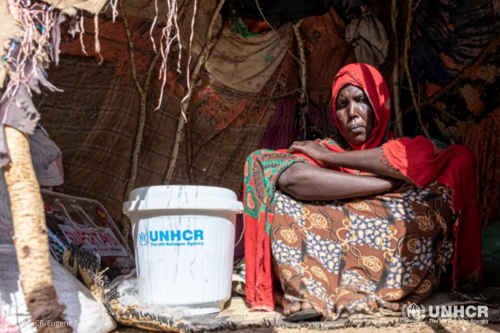
Abdullahi Gedi, a 55-year-old pastoralist also displaced to Mara-gaajo, gathered his cattle, goats and sheep, and left his village, Kabtinag in East Somali Region. However, the arid conditions along the route were too much for his animals, with less than half making it to the Babacada El-Bahay IDP site in Jijiga where he is currently living.
“Except these three, all of my other cows have died,’ he said, pointing to the emaciated livestock next to him. “I also used to have 445 goats and sheep, but now I only have 190 as the rest have died”, he added.
Ethiopia is experiencing one of the most severe La Niña-induced droughts in the last forty years following four consecutive failed rainy seasons since late 2020. The drought is compounding a complex situation in the Somali region of Ethiopia that was already host to millions of internally displaced people, including those forced to flee because of conflict, as well as some 246,000 refugees from neighboring Somalia in eight camps, which have already received some 16,000 new arrivals. Other drought-affected regions in the country include Afar, Oromia and the Southern Nations, Nationalities, and Peoples (SNNP).
Since September 2021, UNHCR, the UN Refugee Agency, has worked with local communities, regional disaster management offices and other partners to deliver water, shelter, warm clothes and household items to more than 7,200 drought-affected households in different IDP sites and host communities.
However, as the drought worsens, people’s needs continue to rise.
“The most pressing issue here is a lack of water, as well as effective water management,” says Abdullahi Sheik Barrie, Field Associate in UNHCR’s office in Jijiga. “The assistance we have been able to provide is far below what is needed to meet the survival needs of the affected people. Together with the authorities and partners, we will continue to help make sure that those displaced have water, shelter and basic relief items and provide transportation for those who choose to return to their homes with their livestock.”
Facing a long and uncertain journey with little food or water, Abdullahi Gedi was forced to leave his wife and seven children behind in their village. He has not heard from his family in the 100 days since he arrived in the Mara-gaajo IDP site.
“I don’t know what happened to them and to the others from my village who stayed: children, women, the old, and other vulnerable people,” he said.
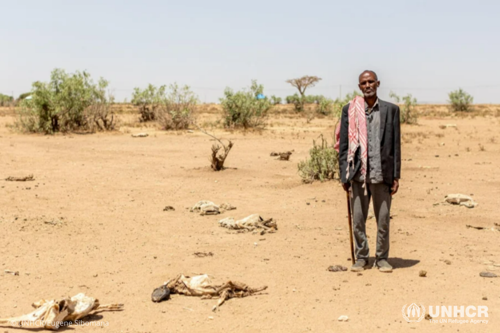
Despite the perilous journey, Abdullahi – like many other IDPs hosted at several sites in the Somali region – told UNHCR he received a generous welcome from the local community, even though they themselves were struggling to cope with the effects of the drought. The famers who took in the displaced pastoralists shared their limited pasture with the IDPs.
In Ethiopia, UNHCR and other humanitarian partners are scaling up assistance to meet the rising needs, in support of the Government of Ethiopia. Moreover, joint efforts have been undertaken within the UN Resilience Framework to support Ethiopia in building resilience against natural hazards, particularly recurrent droughts and floods.
In the Somali region, humanitarian partners are supporting more than 2.4 million displaced people with food and working to deliver clean water to more than 859,000 people still in need. However, existing needs continue to surpass available resources.
UNHCR is seeking US$ 22 million to deliver critical aid to over 1 million refugees, internally displaced people and their host communities affected by the drought in Ethiopia, part of a wider $42.6 million drought response appeal including Somalia and Kenya.
